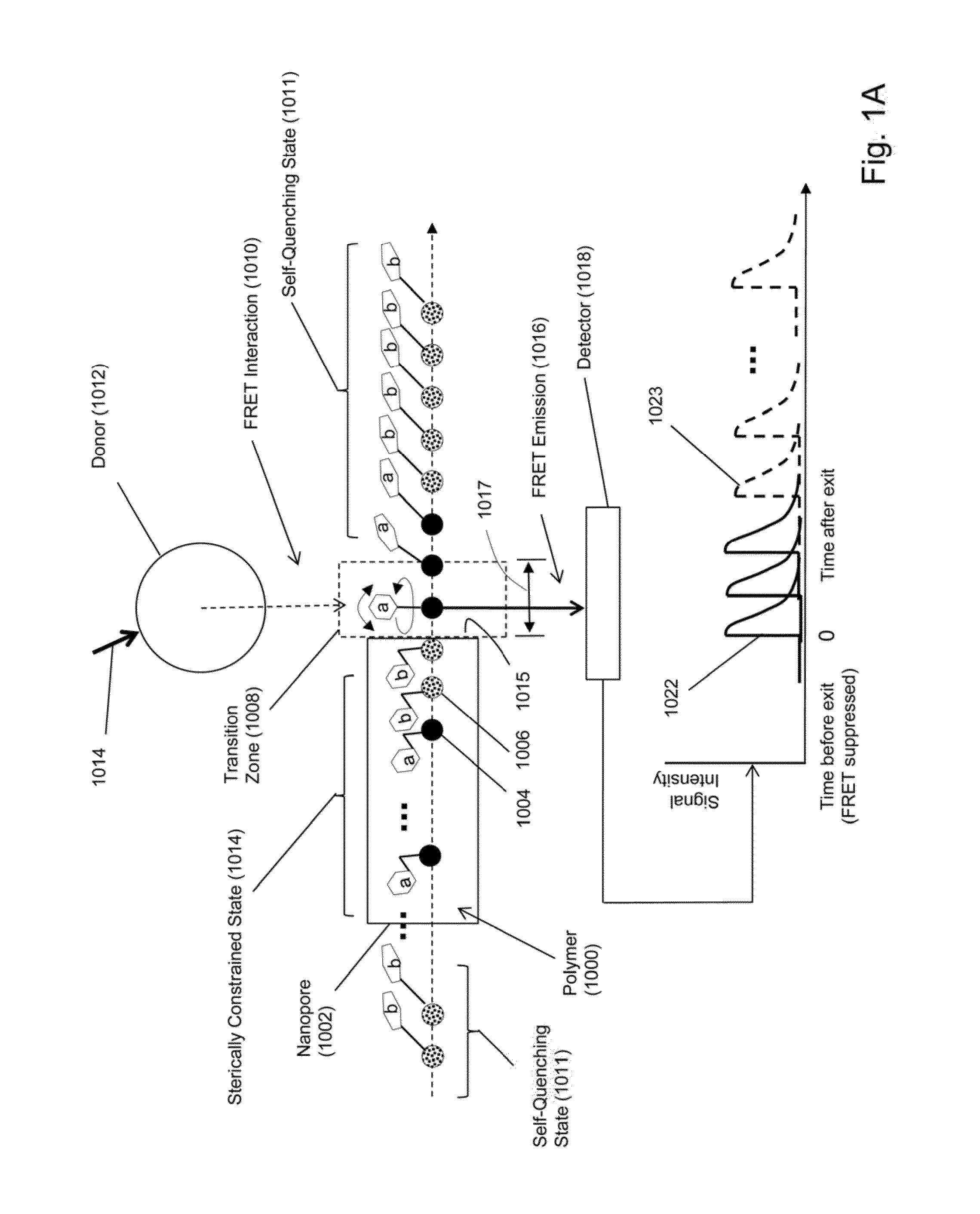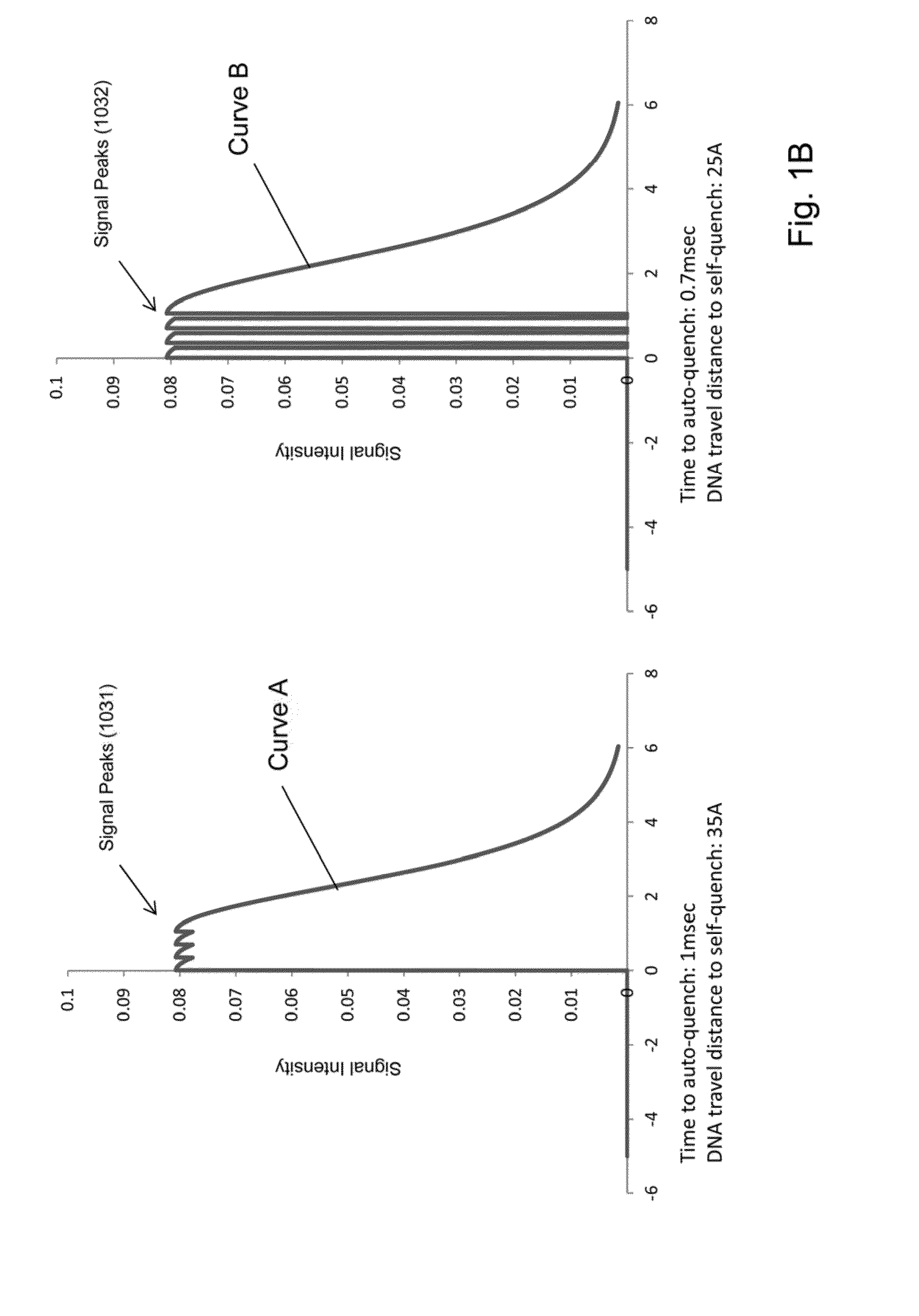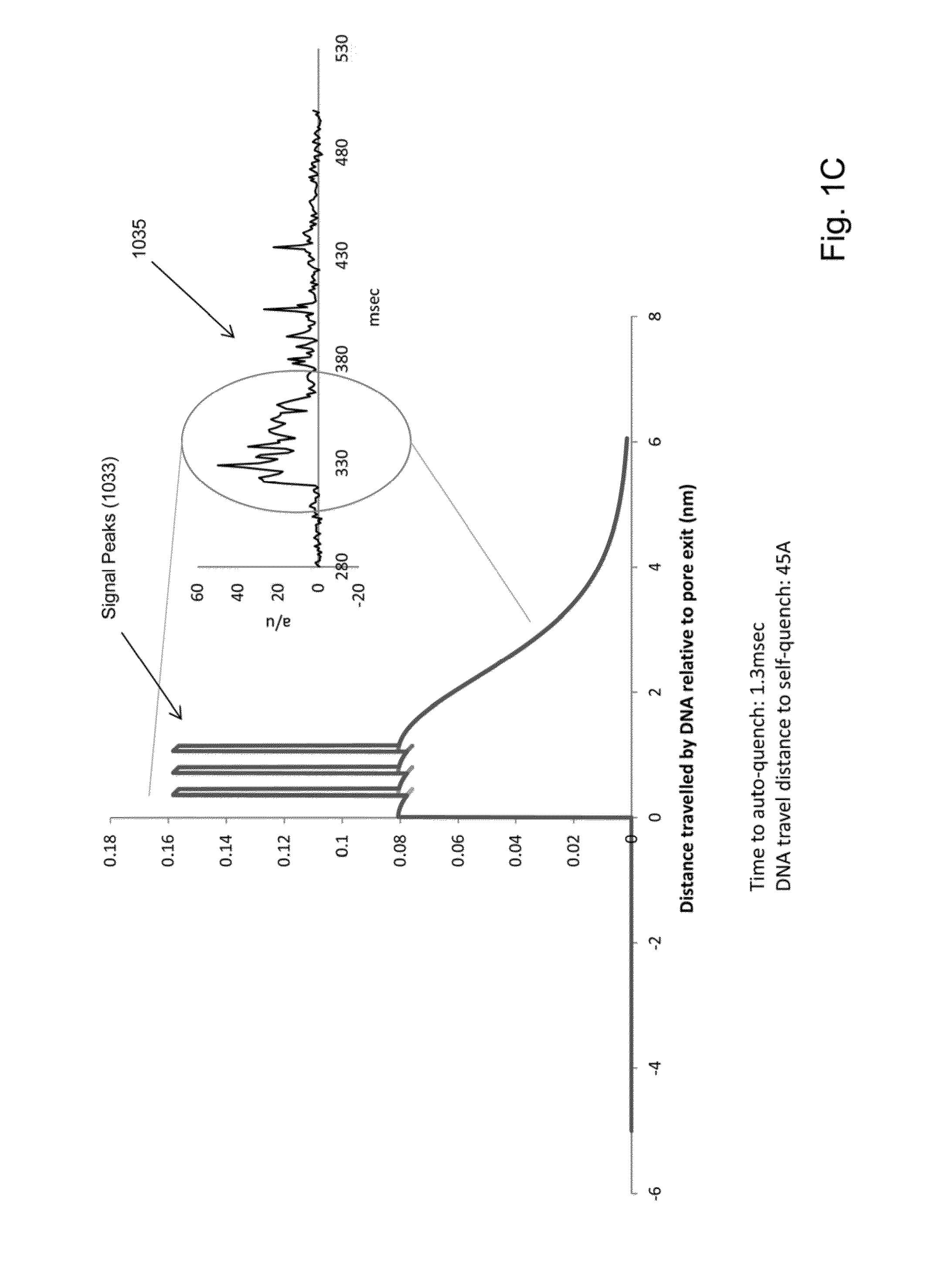Nanopore-based polymer analysis with mutally-quenching fluorescent labels
a fluorescent label and nanopore-based polymer technology, applied in combinational chemistry, biochemistry apparatus and processes, library member identification, etc., can solve the problems of run time, cost of per-run sequencing, and approach that has its own
- Summary
- Abstract
- Description
- Claims
- Application Information
AI Technical Summary
Benefits of technology
Problems solved by technology
Method used
Image
Examples
Embodiment Construction
[0017]While the invention is amenable to various modifications and alternative forms, specifics thereof have been shown by way of example in the drawings and will be described in detail. It should be understood, however, that the intention is not to limit the invention to the particular embodiments described. On the contrary, the intention is to cover all modifications, equivalents, and alternatives falling within the spirit and scope of the invention. For example, particular nanopore types and numbers, particular labels, FRET pairs, detection schemes, fabrication approaches of the invention are shown for purposes of illustration. It should be appreciated, however, that the disclosure is not intended to be limiting in this respect, as other types of nanopores, arrays of nanopores, and other fabrication technologies may be utilized to implement various aspects of the systems discussed herein. Guidance for aspects of the invention is found in many available references and treatises we...
PUM
| Property | Measurement | Unit |
|---|---|---|
| transition distance | aaaaa | aaaaa |
| transition distance | aaaaa | aaaaa |
| molecular weights | aaaaa | aaaaa |
Abstract
Description
Claims
Application Information
 Login to View More
Login to View More - R&D
- Intellectual Property
- Life Sciences
- Materials
- Tech Scout
- Unparalleled Data Quality
- Higher Quality Content
- 60% Fewer Hallucinations
Browse by: Latest US Patents, China's latest patents, Technical Efficacy Thesaurus, Application Domain, Technology Topic, Popular Technical Reports.
© 2025 PatSnap. All rights reserved.Legal|Privacy policy|Modern Slavery Act Transparency Statement|Sitemap|About US| Contact US: help@patsnap.com



